Edited Publications (19)
- KP Singh
.jpg/v1/fill/w_320,h_320/file.jpg)
- May 13, 2021
- 24 min read
Updated: Mar 22
19. SINGH (KP) and Others. (2025). Role of Libraries in the Renaissance of Indian Culture, Knowledge, and Heritage-Vol.1. Role of Libraries in the Renaissance of Indian Culture, Knowledge, and Heritage. KITABWALE: Delhi. P252. ISBN: 978-93-48029-43-0.
The revival of Indian culture is deeply intertwined with libraries, which have, for

centuries, played a crucial role in safeguarding art forms, manuscripts, music, and literature. By preserving, collecting and providing access to rare collections, organizing cultural events, and fostering research on India’s diverse traditions, libraries have consistently served as cultural hubs that bridge the past and the present. The two volumes highlight the enduring efforts of Indian libraries to preserve the nation’s cultural and intellectual wealth. These efforts include maintaining invaluable collections, epigraphic sources, resources on folk traditions, and multi linguistic treasures. Libraries serve not only as repositories of knowledge but also as platforms for communities and users to engage with India’s historical, architectural, and linguistic resources. The volumes comprise 15 chapters each, documenting and conserving traditional Indian knowledge and local traditions, including crafts, architecture, and performing arts. Notable topics discussed in Volume 1 include the revival and re-contextualization of Indian knowledge, innovative approaches to preserving manuscripts and artifacts in the digital era, and research access and indigenous knowledge preservation through repositories. The use of emerging technologies, such as the metaverse, for safeguarding and promoting cultural heritage is also explored. Volume 1 further discusses Vedic mathematics, the preservation of Indian manuscripts, and Indian government initiatives toward the digitization and preservation of the Indian knowledge system.
18. SATIJA (MP), CHANDEL (AS) and SINGH (KP). (2024). SR RANGANATHAN: Some Select Indian Studies on His life and Work. Today & Tomorrow's Printers and Publishers: New Delhi. P333. ISBN: 978-9391-7349-5-4

Many events and programs are on the way since the last two years to celebrate the century of Ranganathan’s entry into the profession. This anthology is a humble contribution to this momentous occasion. This book commemorates the man and the librarian who made an incredible mark on the foundations of the m oden library and information science. This anthology has seventeen selects papers on Ranganathan by some of the prominent authors (some were his students) of recent past as Professor PN Kaula, Shri Girja Kumar, and Professor AP Srivastava, all doyen of the library profession of the privileged generation who studied under Ranganathan and wrote with deep devotion on him to generate some pioneering studies. Of course, Professor Kaula was his unstintingly most devoted acolyte who wrote prolifically and spoke extensively on Ranganathan to propagate his message, methodology and ideology.
More Details
Publisher: https://www.ttpp.in/book-info/s-r-ranganathan-some-select-indian-studies-on-his-life-and-work
17. SINGH (KP) and Others. (2023). Recent Trends in Academic Libraries: Systems and Services. Book Age Publishing: New Delhi. P965. ISBN- 978-93-93904-18-8.
Libraries are undergoing significant changes to meet the demands of patrons and remain competitive, requiring a planned and development-friendly transformation process. Academic libraries, especially, are transforming due to shifts in higher education and the evolving information landscape, leading to
increased reliance on electronic resources. In response to these changes, the Delhi Library Association and the Library Association of Bihar are collaborating to host an international conference on "Recent Trends in Academic Libraries: Systems and Services" at the Manav Rachna International Institute of Research and Studies on August 18–19, 2023. This conference aims to educate participants on the latest developments in academic library systems and services, including modifications made following the pandemic, providing a platform for LIS professionals to discuss advancements and share experiences. The event will feature presentations, invited talks by specialists, and panel discussions.
16. SINGH (KP) and Others. (2022). Envisioning Digital Transformation in Libraries for NextGen Academic Landscape: Uttar Pradesh. CALIBER: INFLIBNET, Gujarat. P560. ISBN- 978-93-81232-10-1.
The Indian government introduced the National Education Policy 2020 on July 29, 2020, aiming to modernize the country's education system by emphasizing ancient Indian knowledge and establishing multidisciplinary institutions for holistic education. The policy also seeks to increase the Gross Enrolment Ratio (GER) in Higher Education to 50% by 2035 and proposes the creation of the National Educational Technology Forum to integrate technology into all educational levels. Additionally, the role of academic libraries is evolving with the rise of online learning and technological advancements, requiring them to manage digital information sources, research data, and educational content, and utilize artificial intelligence, machine learning, and other ICT tools to improve organization and innovation within institutions.
CALIBER 2022 presents a unique opportunity for information workers and knowledge managers to enhance their professional knowledge. This narrowly focused event covers current developments in computer science and library and information science, bringing together global practitioners and scholars. The event offers a platform for renowned speakers to facilitate strategic discussions among publishers, information professionals, and librarians. The INFLIBNET Centre is inviting high-quality papers related to the convention themes for the 13th International CALIBER 2022, which will be held in Varanasi, Uttar Pradesh, from November 17 to 19, 2022, in collaboration with the Sayaji Rao Gaekwad Library, Banaras Hindu University.
15. SINGH (KP) and Others. (2022). Infrastructure, Information and Innovation for Building New Bharat: New Delhi. Satija Research Foundation for Library and Information Science (SRFLIS): New Delhi. P564. ISBN- 978-93-91465-18-6.

Bharat – the lifeline of 1.417 billion souls, divine spirit connects Indians with nationalism fervour, historical, cultural, and spiritual heritage of indelible glorious golden past, land of diverse religions, languages, cultures, customs, and traditions, leaping to the zenith in diverse fields of agriculture, education, business, technology, and numerous sectors, the propounder of ‘Zero’ and ‘Education’ to the west is striding with pride, contentment, confidence, spirituality, the tech-guru, and global leader through 75 years of Azadi ka Amrit Mahotsav celebrations.
The new Bharat, Atma Nirbhar Bharat, gleaming with indigenous technological advancements, shining like a 'Kohinoor' at a global platform, contributing in multi sectors development through its educational and knowledge excellence and skilled & competent professionals. The research output of R&D sectors and academic research organizations is not accomplished without state-of-the-art libraries and information centres that act as oxygen units for academic & research developments. Indeed, the acceptance & application of emerging and cutting-edge technologies in present-day knowledge hubs provide impetus to research and academic activities and justify their importance, role, and values for authentic information intermediaries in the Google scenario. The National Education Policy 2020, interspersed with national ethos, imbibes Indian values, culture, and national spirit, the blueprint of being a global knowledge superpower is aiming to be centric on the pursuit of Knowledge (Jnan), Wisdom (Pragya), and Truth (Satya). 4th DLA-SRFLIS SUMMIT 2022 with the theme Infrastructure Information and Innovation for Building New Bharat, jointly organized by Gandhi Bhawan - A premier academic institution of the University of Delhi and Gandhi Smriti and Darshan Samiti, Ministry of Culture, Government of India is a splendid, unique, and extraordinary in many ways as the nucleus is libraries and information centres, collection and services, new technologies and challenges with exclusive coverage of electronic resources, MOOCs, Data mining and other related issues, aspects and concepts along with but for the first time a library science conference is focusing on and presenting interdisciplinary themes exclusively Azadi Ka Amrit Mahotsav, Atma Nirbhar Bharat, India as Global Knowledge Superpower, One Nation One Subscription, Educational Accreditation Bodies and NIRF with Mankind and Environment.

14. SINGH (KP). (2021). LIS Education: Pragmatic Pardigim Shift. Today & Tomorrow's Printers and Publishers: New Delhi. P341. ISBN- 978-9391-7343-6-7.

The formal LIS education in India has completed 110 (1911-2021) glorious years of journey. Similarly, the LIS department of Delhi University which is considered as ‘Gangotri’ of LIS education and research in India also completed its 75 years of incredible journey of academic excellence. The book consisting of fourteen signature research articles contributed by the eminent teachers, academic administrators and researchers on diversified areas of LIS education such as Resurrecting Path, Quality Assurance, Research Advocacy and Promotion of Academic Integrity, Changing Dimensions of LIS Education in Digital Era, Course Curriculum and Employability, Internationalisation of LIS Education, LIS Education for Social Capital and Cross Community Participation, Preservation and Conservation, Choice-Based Credit System, Review on LIS Education and state specific LIS Education scenario. The author firmly believes that this exclusive work on various dimensions of LIS education published on the occasion of completing 75th years of LIS department will serve the readers as a treatise on the subject. Further, the book is special in terms of its content and composition and will fill the gap of literature in the domain of library education.


13. SINGH (KP) and Others. (2019). Proceeding Papers on International Conference 3 DLA – SRFLIS Summit 2019: Digital Age Strategies in Information Management for Sustainable Librarianship (SRFLIS): New Delhi. P.516. ISBN- 978-81-927409-7-3.
The dawn of technological advancements, new challenges, and changes to cope up for effective and best services, workmanship and professional excellence to remain the trustworthy advisors and service orienteers to deal with upcoming concepts, issues, technological changes, impediments, and opportunities demands that we professionals have to recast our role and prove our competence and mettle for users’ satisfaction. To address the professional needs and effectively deal with professional challenges, the Delhi Library Association, Delhi, and SR Foundation for Library and Information Science are jointly organizing this International Conference as 3rd DLA-SRFLIS Summit 2019.
The main theme of 3rd DLA-SRFLIS Summit-2019 is “Digital Age Strategies in Information Management for Sustainable Librarianship” with sub-themes as Innovative Library Services and Users‟ Expectations, Content Management and Access to Information in Digital Age, Innovations in LIS Education and Research, Role of Libraries for Sustainable Future and Best Practices and Metrics Studies. These earmarked areas very aptly to justify the new issues and impediments facing by present-day libraries and library professionals. To outreach the professionals for gaining skills and competencies through dialogue and discussions, the organizers have not left any stone untouched and widely used the social media tools such as LIS Links, library soup, all conferencealert.com, library.com, LinkedIn, Facebook, and WhatsApp groups and also other means for wider promotion and publicity. The effective impact is very much visible with excellent response from library professionals throughout the country and abroad who keenly forwarded their research papers and showed extreme happiness to be a part of this mega event.
ISBN-978-81-927409-7-3 Rs. 2200/-
12. Satija (MP), Martinez-Avila (Daniel) and Swain (Nirmal K), Ed. (2019). Plagiarism: An International reader. ESS ESS Publications: New Delhi. P 1-363. ISBN: 978-93-87698-14-7. (Series Editors No. 14 KP Singh)
Thieving knowledge and other creations is plagiarism. The emergence of information technologies and the consequent information explosion, and other changes affecting research, creativity, and academia, it is becoming more and more the talk of the academic town. In the academic world and creative circles, everybody is taking of it, as if all have become bitten now by this old bug. Plagiarism must be curbed, though it cannot be eradicated. It must be controlled to provide security and encouragement to creators on whose creative labors the society moves onto the path of overall progress. The best means is to sensitize and educate people from early childhood against this menace and its devastating consequences. This is an internationally commissioned compilation of articles from some of the known authorities in the field, and who have already some research to their credit. Papers fall mostly in three broader categories: theory of plagiarism and ways to curb it; attitudes towards plagiarism in different countries and various academic disciplines; and lastly, punishment for plagiarism by way of public exposure and trail of their crime and retraction of published articles. The aim is to promote an ethical culture and high standards of integrity and transparency in the conduct of research and publications. It is earnestly hoped these papers based on research and reflections provide some grist to the mill of scholars and activists working against plagiarism- to make society free of this plague. ISBN-978-93-87698-14-7 Rs. 1200/-
11. SINGH (Sukhdev) Ed. (2018). Guru Nanak: A Webliography Open Access Books in English, Punjabi & Hindi. Satija Research Foundation for Library and Information Science (SRFLIS), New Delhi. Pp. xvi, 177. ISBN: 978-81-927409-6-6. (Series Editors No. 12 KP Singh)
The most outstanding figure of the Bhakti Movement of India, Guru Nanak (1469-1539) has definitely emerged as a milestone in the religious, social, and political history, especially of North India. His rational philosophy and reformist ideals won him many devotees which in the course of time have got transformed into a dominant religion of Punjab and a revered faith all over the world. His simple preaching and message of oneness of humanity exemplified by his own lite have inspired masses of generations and have endeared him with love and reverence for many centuries. Going by his social and religious impact on society, many writings and research works have been published by individuals and institutions to explicate his life, philosophy, and contribution to society in general. In addition to that several bibliographies have also been compiled about published unpublished works on Guru Nanak nowadays a lot of documents on Guru Nanak are freely available over different web portals and digital libraries, These documents are mainly in the forms of digitized books, manuscripts, research articles and pamphlets that can be read online as well as can be downloaded in PDF format Majority of the digitized books are rare in nature that cannot be found easily in most of the libraries This work systematically identifies, lists and classifies 550 open access full-text books-on Guru Nanak available in English, Punjabi, and Hindi. Called a secondary source of information in library lingo, it is the first such effort in the history of preparing bibliographies on Guru Nanak With a single click of the mouse you may access the desired book(s)on Guru Nanak listed in this Webliography.
ISBN-978-81-927409-6-6 PDF
10. SATIJA (MP), SINGH (Sukhdev) and CHANDER (Harish) Ed. (2018). Punjabi Reference Sources: A Descriptive Guide. Satija Research Foundation for Library & Information Science: New Delhi. ISBN-978-81-927409-5-9. Pp. Xvi, 429. (Series Editors No. 10 KP Singh)
Reference sources provide ready-made bits of cut and dried information and data which save the valuable time of researchers and writers and free them from the hassles of digging information buried deep in libraries and books. Such information sources not only facilitate research and teaching but also work as a catalyst for formal research. It is an agreed fact that the quality and quantity of research output depends upon the availability, quality, accessibility, and use of reference sources in any discipline of knowledge; Punjabi is no exception. This work systematically identifies lists, classifies, and critically describes 500+ reference sources available in Punjabi. Called a tertiary source of information in library lingo, it is the first such effort in the history of the Punjabi language. Apart from studying their origin and development, it spots gaps in different areas of Punjabi reference sources. Gaps may urge and guide the Punjabi scholars and librarians alike to join hands and produce reference tools in these areas. Such staring gaps are a challenge to Punjabi scholarship to be filled. Works as this is always ongoing and soon become dated. I hope this unique work will be kept current by new regular editions or supplements.
ISBN-978-81-927409-5-9 . Rs. 1200/-
9. SATIJA (MP), DANIEL (Martinez Avila) and MANUEL (Rosa San Segundo) Ed. (2018). Library Classification and SR Ranganathan: A Guide. Satija Research Foundation for Library and Information Science (SRFLIS) and ESS ESS Publications: New Delhi. P 292. ISBN: 978-81-936074-7-3.
(Series Editors No. 7 KP Singh)
S. R. Ranganathan stays put in our thoughts and work even nearly half a century after his death. Some of his work is classic with lofty ideas that always engender new thought for the present age. Ranganathan brought a paradigm shift in the theory and practice of library classification and extended its reach much beyond the library walls. Facet analysis is the order of the day, not only in library classification but also in organizing and searching the web. Now the world is experiencing a second Golden Age of Classification and Indexing in the World Wide Web environment. In fact, faceted classification prophesized as the basis of all knowledge organization systems and tools in the mid-1950s is proving visibly true today. The classification has bounced back with a vengeance. Late Eugene Garfield aptly said, ‘Ranganathan is to library science what Einstein is to physics. This work presents a brief summary and importance of Ranganathan’s work in classification, though by no means his best. It is difficult to come out with the best of a treasure in an ocean. He left a huge body of classification literature, full of thought-provoking with multidimensional applications. Apart from the Classification Research Group (CRG) disciples, his work has inspired many a genius in our profession. True tributes to his importance have been offered from time to time by the greats of our profession. Apart from a summary and chronology of his classification work, this book portrays the current scene on classification studies, practices, and literature in India. Lastly, it makes a hearty plea to know, value, preserve and perpetuate his legacy bequeathed on us – a legacy that has brought glory to the Indian LIS profession. In nutshell, the book is a reminder of his greatness, relevance, and enduring debt to him.
ISBN- 978-81-936074-7-3 Price: Rs. 1200/-
8. Malhan (IV), Chandel (AS) and Satija (MP), Ed. (2016). Human Resource Management in Libraries and Information Centres. SRFLIS: New Delhi. P 1-363. ISBN: 978-81-927409-4-2. (Series Editors No. 4 KP Singh)
It is a compilation of 23 chapters contributed by 27 contributors from India, the U.S.A., Canada, Pakistan, Nigeria, and Sri Lanka on wider aspects of Human Resources Management. The themes covered are LIS education (India and Sri Lanka), career prospects in the library and information profession (LIS schools of India), Human Resources Management, their work conditions, mentoring, communication, and professional ethics. It also highlights the role of open and distance learning as a new education delivery model. Lastly, it dwells on continued professional development both in formal and informal ways especially in the IT environment by the use of Web 2.0, social media, and concepts like Knowledge Management and MOOCs. Two papers concerning Ranganathan explain his role in enhancing the status and prestige of the profession and also a historical paper makes an estimate of manpower needs of the LIS sector for developing India between 1950-1980. A bibliography of three dozen books on HRM has been given for further reading. The book is useful for all those concerned with human resources in diverse fields.
ISBN- 978-81-927409-4-2. Rs. 999/-
7. SINGH (KP) and Others. (2015). Proceeding Papers on International Conference Grey to Green-Creating Sustainable Environment through Green Management Librarianship, ICT, Entrepreneurship & Corporate Social Responsibility(SRFLIS): New Delhi. P.577. ISBN- 978-81-927409-3-5
Today, organizations find themselves buried in structured and unstructured data, as the use of online data resources, mobile tools, and social networking tools spread, there is a growing need to capture, manage and share content and knowledge in new ways. Organizations are looking for solutions to retrieve and manage their content. There are many interfaces to share information and knowledge content among employees, customers, and business partners. The world has become small due to connectivity, knowledge has become a strong currency to trade between individuals and groups, which requires cross-functional planning and expertise through information technology, and ultimately it promotes creativity. There & is no single tool or software package that captures the imagination of the organization to look into a one-stop solution for storing and managing the contents and knowledge and to bring incompatibility between storage devices and human resources. The emerging and cutting-edge technologies have put more onus on libraries to cater to varied information needs and provide state-of-the-art services. This change and challenge are easily witnessed in today library systems and demand professionals who are more determined, competent, and trained to face the array of responsibilities. The transition from information possession to access is inevitable and envisage in a present electronic era where consortia efforts are needed to facilitate all resource hubs. It must be recognized that connectivity keeps us alive, informed and provide an impetus for improvement and acceptance. Tecnia Institute of Advanced Studies, Rohini, Delhi, and Satija Research Foundation for Library and Information Science, in collaboration with UN Information Centre for India and Bhutan Delhi, are jointly holding this International Conference as 2nd Tecnia SRFLIS Summit 2015.The main theme of 2nd Tecnia SRFLIS Summit-2015 is &; Grey to Green & with sub-theme Librarianship, Green Management, Green ICT, Green Innovative Entrepreneurship, Knowledge Management, Open Education Resources, and Corporate Social Environmental Responsibility. This summit provides a platform for discussion and exchange of ideas on the main theme and its surrogates themes in order to develop- understanding of the role of ICT, Management Science, and LIS Professionals in Knowledge Innovation and Knowledge Management. Debate and develop strategies to manage information systems and libraries in the web environment. Identify and share &; Best Practices & developed and adopted by various information systems and libraries, and Increase the expertise and provide the best possible platform by educating students and attracting new researchers. The Conference outline and detail were extensively advertised on social media such as LIS Links, library soup, allconferencealert.com, library(dot)com, Linkedin, Facebook, and WhatsApp. There has been a tremendous response from professional colleagues and potential authors throughout the country. The Editorial Committee reviewed them thoroughly and shortlisted papers based on quality, content, and presentation. About 78 papers have been accepted from the field of Management Science, Information Technology, Mass Communication, Library & Information Sciences and its allied fields and after review are published in the proceeding volume and also in electronic form. It was decided to encourage upcoming professionals especially the research scholars be motivated to present their views in the conference and also to give sufficient space in the proceedings to them. The volume has been organized in seven sections around the Conference & main theme. Section one on Green Management and Green Librarianship includes twelve papers on various sub-themes. These papers cover various issues, green libraries, and sustainable environment, Green HRM, Green HR Practices, Grey to green business initiatives, Social entrepreneurship, Environmentally Sustainable Transport, and Corporate Social Responsibility. Section two on Knowledge Management, Change Management, and Library Consortia includes fourteen papers on various sub-themes. These papers cover knowledge management in university libraries, library consortia, change management, development of E-consortia, subject gateways, and E-resource management. Section three on Application of Mobile and Web Technologies- includes ten papers on various sub-themes. These papers cover the application of mobile technology, Smart Phones, RFID Application, Library Automation and Networking, and Wi-Fi Direct API Building Blocks in Android. Section four on Semantic Web and Ontology includes seven papers on various sub-themes. These papers deal with web technology applications, ontology, Web-2.0 applications, social networking sites, metadata, and cloud computing. Section five on Open Source Software and Open Educational Resources includes eleven papers on various sub-themes. These papers cover information Protocol-Z39.50, open-source software, open educational resources, developing library systems, innovative practices, and relational databases. Section six on Library Services, Education, and Information Literacy includes fourteen papers on various sub-themes. These papers cover the impact of quality services, empowering HRD, data curation, adoption of library standards, information search strategies, transforming academic libraries, best practices/TQM, and digital information literacy. The last section on Green Marketing and Marketing of Library and Information Products and Services includes ten papers on various sub-themes. Green marketing, Total quality management, Google Awards, marketing of library and information products, and library outreach programs. The Editorial Board thankful to the faculty and research scholars of the Department of Library and Information Science, the University of Delhi, and the Tecnia Institute of Advanced Studies; namely Dr. Malkeet Singh, Ms. Nandi Negi, Mr. Harish Chander. We are also thankful to Shri Ram Kailash Gupta, Chairman, Tecnia Group of Institutions, Delhi and Emeritus Professor, MP Satija, Department of Library and Information Science. Guru Nanak Dev University (GNDU). Amritsar, Punjab as a source of inspiration. Further, Editorial Board acknowledges with profound gratitude, the immense efforts of the contributors on new contemporary issues on the topic and hope that the ideas generated in these papers would be a source of reference for the future research, conference, workshops, seminars and academics deliberations for further enriching the library information systems as a medium for realizing the theme of Conference in true spirit i.e. Grey to Green.
ISBN-978-81-927409-6-6 Rs. 1600/-
6. SINGH (KP) and Others. (2014). Proceeding Papers on International Conference Content to Connectivity- Paradigm Shift in Knowledge Innovation, Information Representation, Information Management Systems, and Librarianship. Satija Research Foundation for Library and Information Science (SRFLIS): New Delhi. P.549. ISBN- 978-81-927409-2-8
Today, organizations find themselves buried in structured and unstructured data, as the use of online data resources, mobile tools, and social networking tools spread, there is a growing need to capture, manage and share content and knowledge in new ways. Organizations are looking for solutions to retrieve and manage their content. There are many interfaces to share information and knowledge content among employees, customers, and business partners. The world has become small due to connectivity, knowledge has become a strong currency to trade between individuals and groups, which requires cross-functional planning and expertise through information technology, and ultimately it promotes creativity. There’s no single tool or software package that captures the imagination of the organization to look into as a one-stop solution for storing and managing the contents and knowledge and to bring incompatibility between storage devices and human resources. The emerging and cutting-edge technologies have put more onus on libraries to cater to varied information needs and provide state-of-the-art services. This change and challenge are easily witnessed in today’s library systems and demand professionals who are more determined, competent, and trained to face the array of responsibilities. The transition from information possession to access is inevitable and envisage in a present electronic era where consortia efforts are needed to facilitate all resource hubs. It must be recognized that connectivity keeps us alive, informed and provide the impetus for improvement and acceptance. The volume has been organized in nine sections around the Conference’s main theme. Section one on Knowledge Management: Representation, Knowledge-Based System, and Data Mining includes twelve papers on various sub-themes. These papers cover various issues, business process re-engineering, information visualization, and information retrieval, creating new businesses, random walker methods, data mining, and knowledge-driven innovations. Section two on Knowledge Management in Libraries: Tools, Techniques, and Technologies include seven papers on various sub-themes. These papers cover knowledge management in university libraries, a login-based management information system of libraries and librarians in India, subject information gateway in information technology, and the process and cycle of knowledge management. Section three on Information Communication Technology: RFID, Cloud Computing and Mobile Technology includes six papers on various sub-themes. These papers cover mobile technology to deliver library and information services, mobile strategy, RFID technology, and digital content in libraries. Section four on Web Technology: Open Source Software and Social Site Networking include ten papers on various sub-themes. These papers deal with open source software, cloud computing in digital perspectives, podcasts, wireless networks, web 2.0 modern electronic world, social networking sites, and libraries and social media on society and cyber law. Section five on Digital Libraries: Digitization, Institutional Repositories and Networks include eight papers on various sub-themes. These papers cover academic libraries: steps to digitization, the policy framework for Indian institutional repositories, DELNET, digital library and archives of photographs, digital library, and social environment, digital library in the new millennium, and ETD in India. Section six on Resource Management in Library Libraries: Paradigms in Acquisition and Preservation include eight papers on various sub-themes. These papers cover the preservation of manuscripts in the Sikh reference library, innovative practices in academic libraries, total quality management, resource collection in technical libraries, reaching out to the users with innovative technologies, e-book selection, and acquisition process, electronic resource management solutions, and best practices in college libraries. Section seven on Human Resource Development: Competencies, Skills, and Information Literacy include nine papers on various sub-themes. These papers cover user relationships: skills and ideas, competencies needed for digital librarians, expectations of user education, technology-enhanced information literacy, and LIS education and curriculum development. Section eight on Library Informatics: E-Resources, Use Pattern and Satisfaction include eleven papers on various sub-themes. These papers cover the usefulness of e-resources, satisfaction level, use of e-resources, awareness, and use of e-resources and e-resources and internet and the last section nine on Marketing of LIS Products and Services: Innovation, Strategies, and Sustainability include three papers on various sub-themes. These papers cover marketing possibilities of the information products, successful management of libraries, and marketing of library and information services: a solution for sustainability.
ISBN-978-81-927409-2-8 Rs. 1600/-
5. SINGH (KP). (2012).Special issue on Agricultural Information Systems and Services in India. Guest Editor DESIDOC Journal of Library & Information Technology. 32(1) 2012;110
Agriculture has been an integral part of human life ever since the inception of the human race and the requirement for agricultural information is probably almost as ancient as agriculture itself. Clay tablets excavated in the city of Babylon have been discovered containing agricultural information. India is essentially an agrarian society and the lifeline of more than seventy percent of the rural population of India. In India, special emphasis was laid on the development of an agricultural research infrastructure immediately after Independence. During the year 1965, soon after the re-organization of the Indian Council of Agricultural Research (ICAR) and the creation of the Department of Agricultural Research and Education (DARE) under the aegis of the Ministry of Agriculture, Government of India, the responsibilities of higher education, research, extension, consultancy and libraries in the field of agricultural sciences including animal and veterinary sciences became the sole responsibility of the Indian Council of Agricultural Research (ICAR). Since then, the ICAR has been playing a catalytic role in the field of education, research, extension pertaining to all aspects of agricultural sciences and making the country a self-reliant, hunger-free India as well as a food-secure India. The agricultural libraries have served the nation since the initiation of the agricultural universities and research institutes. Today, the libraries network under the National Agricultural Research System (NARS) is one of the biggest networks in the world, which consist of 44 State Agricultural Universities (SAUs), One Central Agricultural University (CAU), 5 Deemed-to-be-Universities (DUs), 17 National Research Centres (NRC), 50 Central Research Institutes (CRI), 6 National Bureaus (NBs), 25 Project Directorates (PDs) and 78 All India Coordinate Research Projects (AICRP). This special issue of DESIDOC Journal of Library and Information Technology (DJLIT) on ‘Agricultural Information Systems and Services in India’ covers seven papers contributed by the agricultural librarians, teachers, and independent scholars. The focus of these articles is to provide comprehensive information on agricultural education and research, agricultural libraries, information resources, services and systems, AGRIS, agricultural consortiums, digital agricultural libraries, and web-based agricultural systems and services, all accompanied by extensive literature review.
4. SINGH (KP) and others. (2010). Knowledge Management: Issues and strategies.2010. U-Day Publishers and Advertisers: New Delhi. P 306
Today’s knowledge environment is largely influenced by continuous, often face radical changes. Information is an important resource in the knowledge society and its management is unique and different from traditional data management. Knowledge management helps us in gathering and organizing information intelligence, capturing ideas, customer innovation, and the transfer of tacit knowledge. Nowadays Knowledge management is so important not only in organizations but everywhere. The book is divided into four parts, presenting an exhaustive view of Information knowledge management Like-Agricultural Information Management, Information and Communication rote in Libraries, Emerging Technologies for Library Automation and Analysis and Impact of Information Communication Technologies which covers the various aspects such as technologies and services in the Indian libraries, issues, and strategies for the preservation of digital heritage, search engines trends and technologies, the emergence of automation in library operations, transforming traditional Libraries into a digital library, open-source software, Institutional repositories, Semantic Web, etc. This publication would be useful for the planners, policymakers, professionals, and all those engaged in the information and knowledge management field. The book has exhaustive information for the present and future needs of every category of user, and the reader has a wider choice to pick the need base information
3. SINGH (KP) and Others, Ed. (2010). National Conference on Knowledge management in the Globalised Era: Lead papers. Association of Agricultural Librarians and Documentalists of India (AALDI): New Delhi. P588.
The knowledge economy and the growth of knowledge management, as an essential competency of organizations, provides new opportunities for librarians and information specialists to expand existing roles and utilize the skills they have honed to meet corporate objectives. The new knowledge management is a period of rapid change- a paradigm shift- for librarians and libraries. It can be viewed as either the beginning of a new “golden age” for the profession or the point when librarians and information professionals became marginalized and perhaps made irrelevant, by the rapid advances in digital computer and telecommunication technologies and the networking power of the Internet, intranets, and extranets. Librarians and information professionals are able to transform themselves into value-adding knowledge professionals. However, this will require a radical change in how they view their roles and jobs within knowledge-based organizations. It will require them to visualize a world of rapid change, instantaneous communications, and the transformation of organizations from those based on identifiable boundaries to networks of business relationships. This is the challenge face by information professionals in the electronic environment. The volume content runs in more than 600 pages and the papers are scattered into the following areas such as Knowledge Management in Agricultural Libraries includes 5 papers on various sub-themes. These papers cover agricultural knowledge management, knowledge management issues, the role of libraries in knowledge management, and the use of traditional and electronic resources for providing the best services. On knowledge, Management consists of 11 papers. The papers deal with the concept of information and knowledge, the use and value of institutional repositories, the use of technological advancements in extending services, and the role of the National Knowledge Commission in the social and economic development of the country. on Web Technology: Trends and Issues has 17 papers. The papers cover the areas as the role of web technology in knowledge sharing, concepts of web 2.0 and 3.0, Library 2.0, Semantic web, metadata, M-learning, scientometrics studies, and library portals. on Library Networks, Library Consortium and Library Software have 11 papers. The papers deal with library consortium, e-resources, resource sharing and networking, open-source software, and library automation. Digital Content Management has 11 papers. The papers cover aspects of the electronic information environment in agricultural libraries, institutional repositories, web-based information resources for agricultural researchers and scientists, digitization and preservation of digital resources. on E-learning, E-publishing, IPR, Scientometrics, and Marketing have 18 papers. The papers deal with E-learning, e-publishing, marketing of agricultural libraries, intellectual property rights, concept and issues of IPR, changing role of libraries in the digital environment, and some user and case studies. on ICT Application and Library Automation has 9 papers. The papers cover library automation needs, issues, and applications, library resources and services, the impact of ICT in libraries, and the new emerging technologies inevitable for agricultural libraries. And Information Literacy consists of 6 papers. The papers cover the concept of information literacy, information literacy programs, information literacy in the information age, and the role and impact of information literacy in the electronic environment.
2. SINGH (KP) and others (2009). Financial Management of Library and Information Centers in e-environment: Papers & Proceedings of the National Conference on Financial Management of LIC in e-environment organized by Delhi Library Association & Indian Agricultural Research Institute Library at New Delhi on 31st May 2009. Delhi Library Association: Naraina Vihar, New Delhi. 2009. P-231
Library Resource Centres attached to educational institutions are considered partners in the entire teaching-learning process. Therefore, LICs on their part do all that expected of them. They identify the needed information resources, procure them, technically process them, and organize them and set mechanisms to make them available to those who may need them. All these activities require necessary funding which is always in short supply. The exceptional growth of information resources on one hand and shrinking budgets coupled with devalued Indian Rupee on the other hand in a challenging task before libraries and librarians. There has been seen a paradigm shift in the recent past in many of the housekeeping operations of libraries. Because of the advent of computers and ICT the scenario is changing for good. All these developments warrant careful analysis and a close look at the roles of libraries should librarians are supposed to perform in the new e-Environment. The time has come to rewrite the objectives, functions, duties afresh in the light of an IT-enabled environment. Finance being the most crucial element in the whole process of giving a new look to the LIC infrastructure, the Delhi Library Association decided to give a call for the National Conference on Financial Management Library and Information Centres (LIC) in e-Environment. This conference volume has covered more than twenty-six papers parented by the different participants all over the country on the various issues of financial management of library and information centers, particularly in the E-environment.
1. SINGH (KP) and SHARMA (Sundeep), Comp., (2005). 22 Years of Library Herald: A Database of Cumulative Index Vol. 21 (1982-83) to Vol. 42 (2004). Delhi Library Association, Delhi. P143. ISSN- 0024-2292
Library Herald, a quarterly journal published by Delhi Library Association made its first appearance in July 1958 with a leading article entitled “Document, Documentation, and Standardization” by Dr. SR Ranganathan. The issue was dated April 1958 and had the editorial patronage of M/s S Das Gupta, RS Goyal, KS Pareek, Jainath Kaul, KS Dalal, and P N Kaula. Under the able editorship of these personalities, the journal started coming out regularly in April, July, October, and January each year. In October 1961 the Editorial Board was reconstituted and the editorship was entrusted to Shri NK Goil who was assisted by M/s HC Jain and V Sundaram. After Shri Goil’s death in August 1980, the Editorial Board was again reconstituted with Shri Krishan Kumar as editor and M/s M M Kashyap and CP Vashishth as associate editors. In 2001 Professor CP Vashishth named as the sole associate editor of the Library Herald The journal publishes original contributions in the field of Library Science and Library service, reviews important Indian and foreign publications, and incorporates research reports. Special issues on various aspects of Library and Information Science are also published from time to time. Its annual subscription is Rs. 600 in India and US $ 50 in the USA and other countries. Library Herald is indexed in Library Literature, Library and Information Science Abstracts, Guide to Indian Periodical Literature, Indian Library Science Abstracts, and Index India. It is one of the oldest journals in India in the field of Library and Information Science patronized by Dr. SR Ranganathan. The journal has about 4468 pages and 401 articles to its credit. About 341 authors from India and abroad have been contributed their intellectual articles covering the entire domain of Library and Information Science.





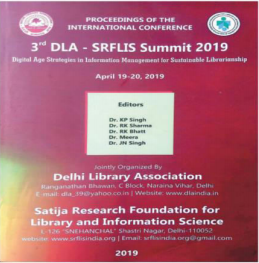







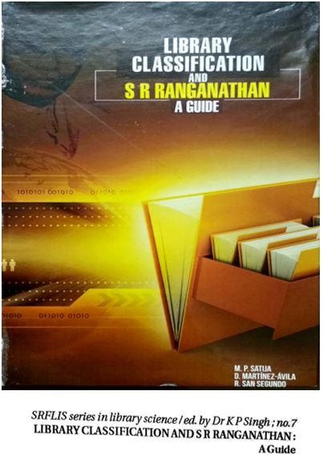



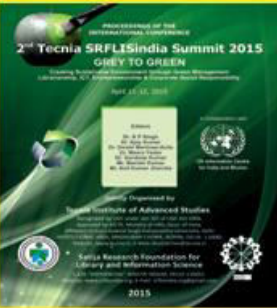

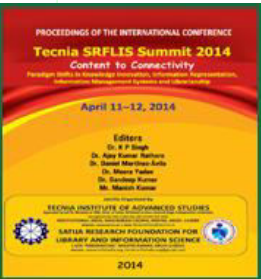
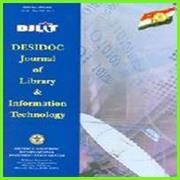

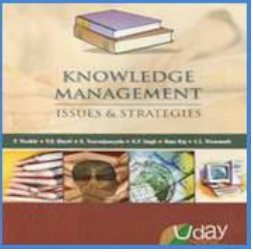

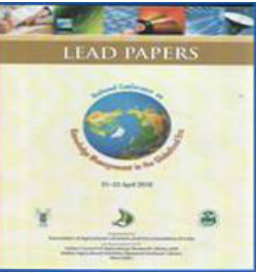
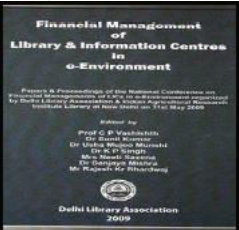
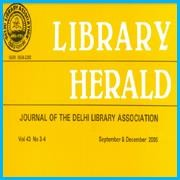
Comments